Disclosure: This article contains affiliate links. We may earn a commission from purchases at no extra cost to you, which helps our travel content.
The Buryat people tell of Baikal's creation when the gods dropped a massive stone from the heavens, creating both the deepest lake on earth and the magnificent mountains that cradle it like protective ancestors. Standing at the edge of Lake Baikal's crystalline waters, with the Pribaikalsky mountain range rising before me, I could feel the truth in their stories. There's something primordial here that transcends mere geological wonder—a connection between water, mountain, and sky that speaks to my Māori heart. He puna wai, he puna ora (Where there is water, there is life), as we say back home in Aotearoa. Over two transformative weeks last summer, I hiked through what must be one of the most spiritually resonant mountain landscapes on earth, discovering trails that weave between luxury and wilderness, between modern Russia and ancient Siberian folklore. This journey through Pribaikalsky National Park's peaks demands physical endurance and rewards it with moments of transcendent beauty that will forever alter how you understand the relationship between mountains and water.
Planning Your Pribaikalsky Expedition
When organizing a group expedition to Pribaikalsky National Park, timing becomes your most crucial consideration. The summer window for serious hiking is remarkably short—July and August offer the most reliable conditions, with temperatures hovering between a pleasant 18-25°C during daylight hours. However, be prepared for the region's notorious weather volatility; I've experienced four seasons in a single day on the higher trails.
Permits are mandatory for hiking in the national park, and the process isn't particularly streamlined for international visitors. I arranged ours through a local tour operator in Irkutsk, which proved invaluable for navigating the bureaucratic requirements. While independent travel is possible, having a Russian speaker in your group will significantly ease logistical challenges.
For mapping the complex trail system, I relied heavily on my Garmin GPSMAP 66i which proved essential when trail markers disappeared on remote sections of the Great Baikal Trail. Its satellite messaging capabilities provided peace of mind in areas where cell service was nonexistent. The investment is substantial but justified when venturing into Siberian wilderness.
Accommodation requires careful planning—the region offers everything from basic mountain huts to surprisingly sophisticated eco-lodges. I particularly recommend splitting your nights between wilderness camping and strategic luxury stays at places like Anastasia Guesthouse in Listvyanka or the remarkable Baikal View Hotel in Severobaikalsk, where traditional Russian banya sessions will rejuvenate trail-weary muscles.
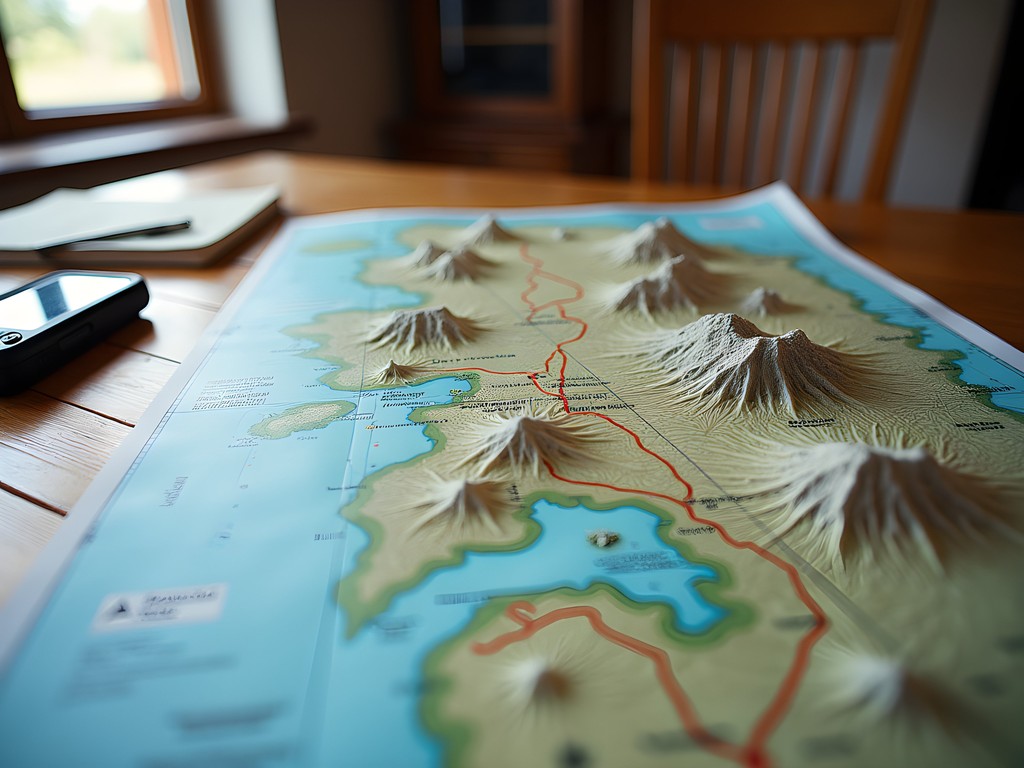
💡 Pro Tips
- Book permits at least 3 months in advance for summer hiking
- Pack for extreme temperature fluctuations, even in summer
- Download offline maps as backup for GPS devices
The Great Baikal Trail: Backbone of Pribaikalsky
The Great Baikal Trail (GBT) serves as the arterial pathway through Pribaikalsky's mountain wilderness, connecting remote villages with some of Siberia's most spectacular viewpoints. Unlike the manicured paths of the Alps or even New Zealand's Great Walks, the GBT retains a raw, uncompromising character that demands respect and preparation.
Our journey began at the southern section near Listvyanka, where the trail immediately climbs through dense Siberian pine forests. The scent of resin and wild herbs created an intoxicating perfume that reminded me strangely of certain coastal walks in Northland. Here, the path alternates between well-maintained boardwalks and challenging rocky ascents that test even experienced hikers.
The trail's middle sections traverse the Olkhon Island mountains, where Buryat shamanic traditions remain palpably strong. Local guides explained that certain mountain passes are still considered sacred portals, requiring small offerings before crossing. I found myself instinctively understanding this perspective—these landscapes speak with voices that transcend cultural boundaries, calling to the indigenous recognition of sacred geography that I carry from my Māori heritage.
The northern sections of the GBT deliver the most demanding terrain but also the most rewarding vistas. The trail climbs to over 1,200 meters at several points, offering panoramic views across Baikal's vastness. Standing at Observation Rock, watching the afternoon light transform the lake into a mirror of molten gold, I experienced one of those rare moments of perfect stillness that justify every blister and aching muscle.
Through-hiking the entire GBT requires serious preparation, but strategic day and overnight hikes allow groups to experience its highlights. I particularly recommend the section between Bolshie Koty and Listvyanka for groups seeking a challenging day hike with spectacular rewards.

💡 Pro Tips
- Carry water purification tablets as natural water sources can be contaminated
- Use trekking poles for steep sections with loose scree
- Learn basic Russian trail greetings to connect with local hikers
Sacred Peaks and Shamanic Traditions
The mountains of Pribaikalsky are far more than geological formations—they form the spiritual backbone of Buryat cosmology, a fact that resonated deeply with me as someone raised with Māori understandings of sacred landscapes. Throughout our trek, we encountered evidence of living shamanic traditions that have survived centuries of both tsarist and Soviet suppression.
Most prominent are the serge (wooden poles) and ovoo (stone cairns) that mark spiritually significant points along mountain trails. These simple monuments serve as communication channels between the human and spirit worlds. Our local guide, Mikhail, explained that the most powerful mountains are believed to house guardian spirits that can either protect or hinder travelers depending on how they're approached.
On our fifth day, we hiked to Shaman Rock on Olkhon Island—perhaps the most renowned sacred site in the entire Baikal region. Here, the mountain meets the lake in a dramatic limestone cliff that glows amber in the evening light. According to Buryat tradition, this is where Burkhan, the modern manifestation of ancient tengri deities, resides. The prohibition against driving metal stakes (including tent pegs) into the ground near sacred peaks meant we needed to adjust our camping approach in certain areas.
I was particularly moved by the ritual of tying colorful fabric strips called khadak to trees near mountain passes. This practice, meant to honor local spirits and ensure safe passage, echoed similar customs I've encountered throughout indigenous cultures globally. I found myself instinctively participating, offering a small piece of pounamu (New Zealand jade) I carry as a connection to my own ancestral mountains.
For documenting these spiritual encounters, I relied on my mirrorless camera with its exceptional low-light capabilities that captured the nuanced colors of sunrise ceremonies without requiring intrusive flash photography. Its weather-sealing also proved invaluable during unexpected mountain showers.

💡 Pro Tips
- Always ask permission before photographing shamanic sites or ceremonies
- Learn basic offerings appropriate for mountain passes (usually small food items or coins)
- Remove sunglasses when approaching sacred sites as a sign of respect
Luxury Respites: Strategic Comfort in the Wilderness
While Pribaikalsky's mountains demand physical endurance, I've learned that strategic luxury breaks are essential for group harmony during challenging expeditions. The region offers several remarkable opportunities to experience comfort that feels earned after days on difficult trails.
Midway through our trek, we descended to the shoreline village of Listvyanka for a two-night recovery stay at Legend of Baikal Hotel. The property's lakefront location and traditional Russian banya (sauna) provided the perfect counterpoint to mountain austerity. After arranging for our hiking clothes to be laundered, we spent a glorious afternoon alternating between cedar-scented steam rooms and bracing dips in Baikal's pristine waters—a hydrotherapy experience that rivals any luxury spa I've visited globally.
For truly remote luxury, the eco-lodges near Severobaikalsk offer surprising sophistication. Baikal View Lodge, accessible only by boat or helicopter, combines traditional Siberian architecture with modern amenities. Their chef prepared a memorable feast featuring local specialties like omul fish and pine nut delicacies, accompanied by surprisingly excellent Siberian wines.
Even while camping, we elevated our wilderness experience with thoughtful touches. My portable espresso maker transformed morning camp rituals into moments of civilized pleasure. Weighing just 336 grams, this remarkable device delivers genuine pressure-extracted espresso that rivals café quality—a small luxury that became our group's most anticipated daily ritual while watching the sunrise illuminate Baikal's waters.
For our final night, we splurged on a private dining experience at Buryatskaya Yurta restaurant in Irkutsk, where traditional Buryat cuisine is presented with contemporary refinement. The ceremonial serving of Buryat lamb with pine nuts and herbs provided perfect closure to our mountain journey, connecting ancient traditions with modern gastronomy in ways that honored both.
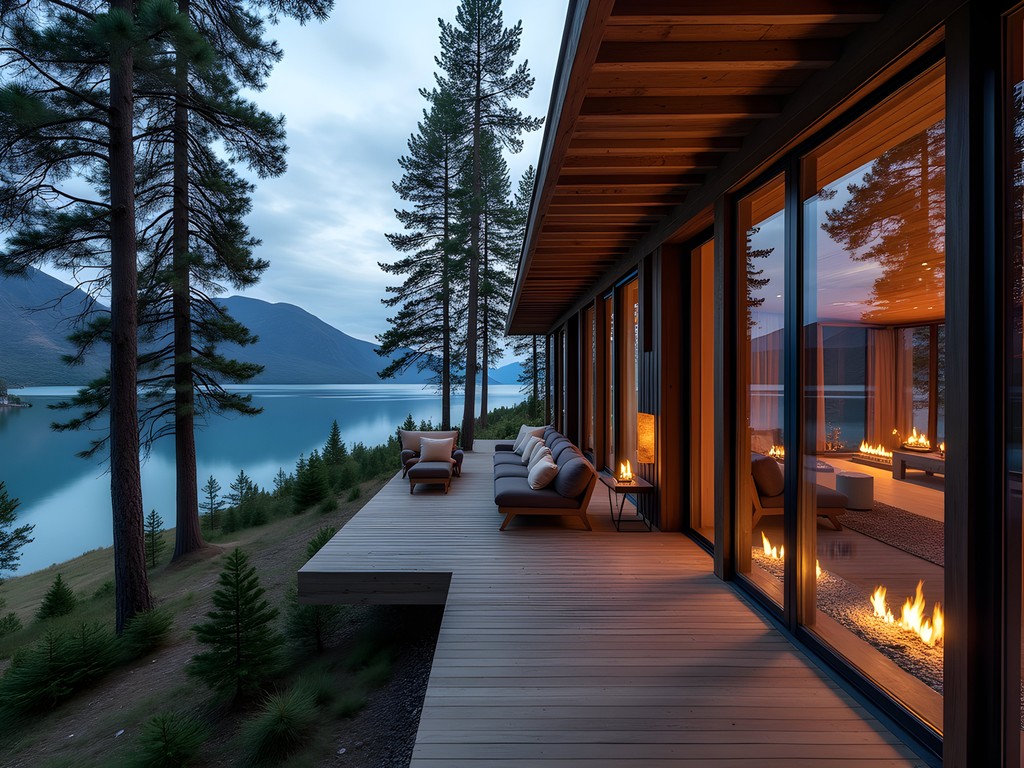
💡 Pro Tips
- Book luxury accommodations well in advance as options are limited
- Arrange luggage transfers to accommodation points to avoid carrying full packs on day hikes
- Pack one 'nice' outfit for special dining experiences in Irkutsk
Essential Gear for Pribaikalsky's Microclimate Challenges
Lake Baikal creates one of the most unpredictable mountain microclimates I've encountered in decades of hiking. The massive body of water influences weather patterns in ways that can catch even experienced mountaineers off-guard. During our two-week expedition, we experienced everything from blazing 30°C sunshine to near-freezing rain, often within hours.
Layering becomes your primary defense against Baikal's mercurial moods. I built my system around a reliable merino base layer that regulated temperature beautifully while remaining remarkably odor-resistant through multiple wears. Unlike synthetic alternatives, merino maintains its insulating properties even when damp—a crucial advantage when sudden mountain showers are a near-daily occurrence.
Footwear demands particular attention on Pribaikalsky's varied terrain. The trails alternate between muddy forest paths, sharp limestone outcroppings, and loose scree slopes. My mid-height waterproof hiking boots with Vibram soles provided the necessary ankle support and grip, though I recommend breaking them in thoroughly before arrival—the remote nature of these trails means foot injuries can quickly escalate into serious situations.
Water management presents another challenge. While Baikal contains 20% of the world's unfrozen freshwater, drinking directly from even this famously clear lake isn't advisable near settlements. Our group carried water purification tablets and a shared gravity filter system for camp use. Each person should plan for carrying at least 2 liters during day hikes, as reliable water sources on mountain sections can be surprisingly scarce.
The region's notorious insect population requires strategic defense. During our July trek, mosquitoes and ticks were persistent companions on forested sections. Beyond standard repellent, I recommend treating outer layers with permethrin before departure and packing head nets for evening hours when insects become particularly aggressive.
For navigation, physical maps remain essential backup to electronic devices. The combination of extreme temperature fluctuations and humidity from the lake can drain batteries with surprising speed, and replacement opportunities are nonexistent once on the trail.
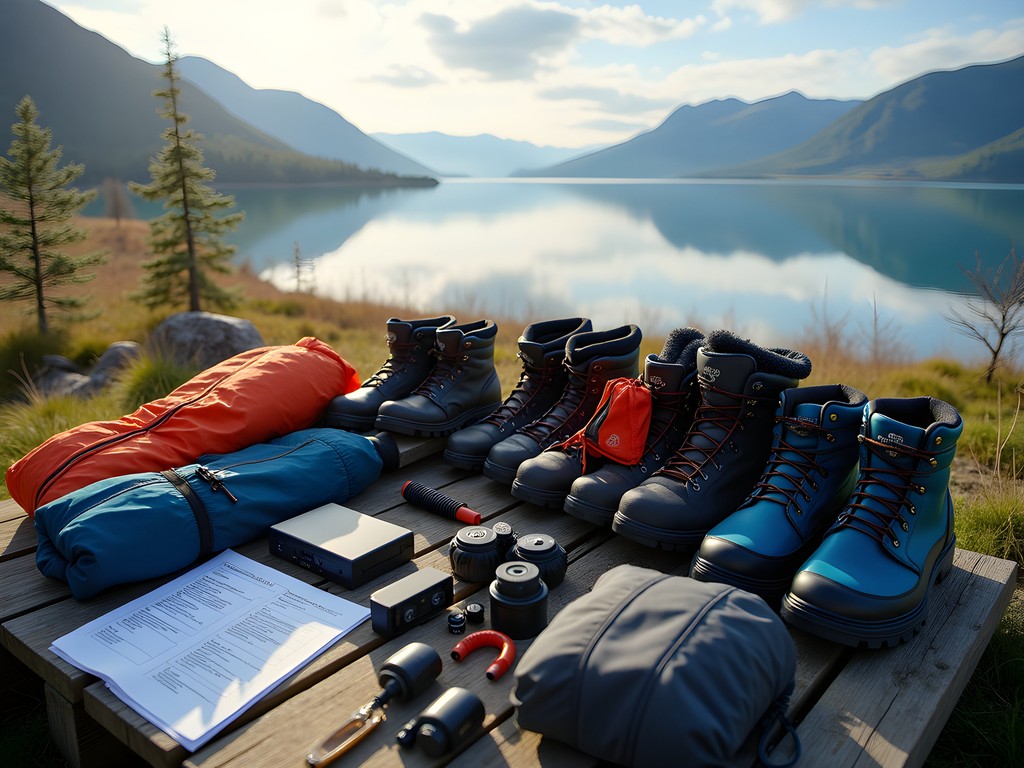
💡 Pro Tips
- Pack microspikes for unexpected icy sections on north-facing slopes
- Bring twice as many socks as you think you'll need—drying opportunities are limited
- Include a compact medical kit with blister treatment and broad-spectrum antibiotics
Final Thoughts
As our helicopter lifted from Severobaikalsk, banking over the mountains we'd traversed over fourteen transformative days, I found myself reciting a Māori proverb: Ka ora te whenua, ka ora te tangata (When the land is well, the people are well). Pribaikalsky's peaks had offered us more than mere hiking—they had provided a profound connection to one of earth's most ancient landscapes and the cultures that have venerated them for millennia. The physical demands of these mountains require respect and preparation, but they return your effort tenfold in moments of transcendent beauty and cultural insight. For groups willing to embrace both challenge and wonder, to alternate between earned luxury and wilderness immersion, Baikal's mountains offer a journey that transcends ordinary travel. They remind us that the most meaningful adventures are those that connect us simultaneously to the earth beneath our feet and to something far greater than ourselves.
✨ Key Takeaways
- Pribaikalsky's trails demand serious preparation but reward with unparalleled wilderness experiences
- Respecting local shamanic traditions enhances the cultural dimension of the mountain journey
- Strategic luxury breaks maintain group morale during challenging sections
- The combination of sacred mountains and the world's deepest lake creates a uniquely powerful landscape
📋 Practical Information
Best Time to Visit
July to mid-August for optimal hiking conditions
Budget Estimate
$2,000-3,500 per person for a 2-week expedition including strategic luxury stays
Recommended Duration
Minimum 10 days, ideally 14-16 days
Difficulty Level
Advanced - Requires Previous Mountain Hiking Experience And Good Physical Condition


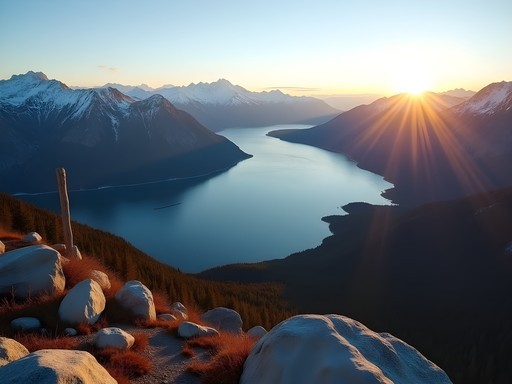
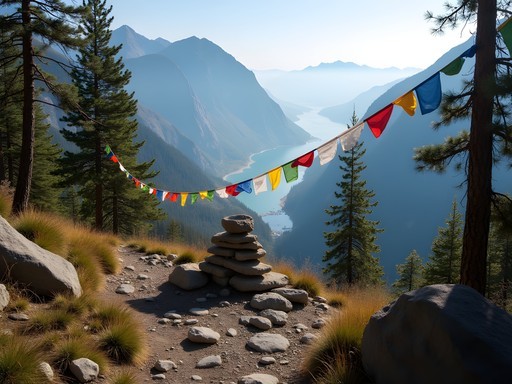
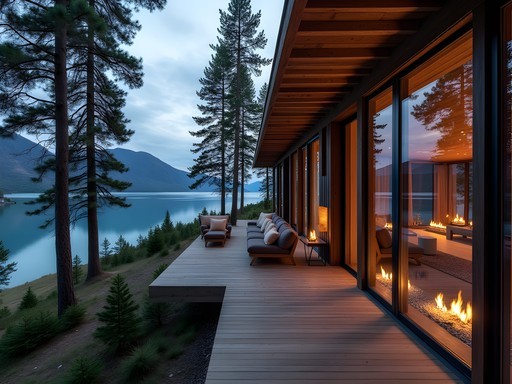




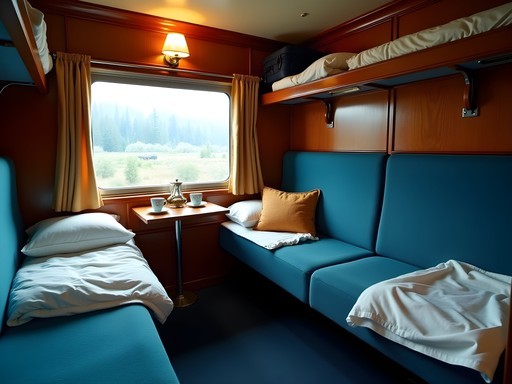
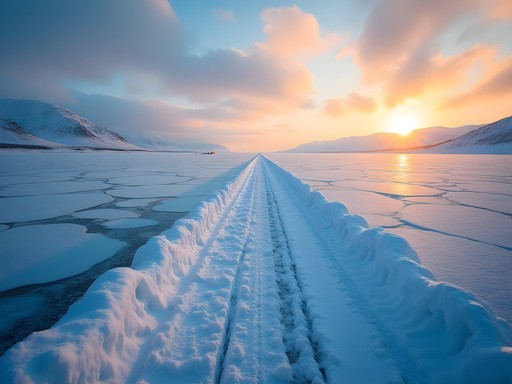




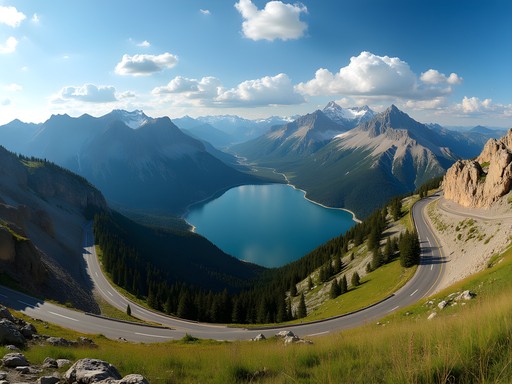
Comments
escapelife
Anyone know if it's possible to do these hikes solo or is a guide mandatory? Not a fan of group tours.
Gregory Boyd
@escapelife The main GBT sections are well-marked and doable solo if you're experienced. The more remote shamanic sites and northern peaks definitely warrant a guide - not just for navigation but for cultural protocol. Solo hikers need to register with park authorities regardless.
Sophia Gomez
This article couldn't have come at a better time! I'm planning a trip to Lake Baikal for next spring and I'm wondering about the best time to tackle these trails. Fatima, when exactly in May did you start your trek? I'm concerned about lingering snow on the higher elevations. Also, did you find your hiking poles essential for the terrain? Debating whether to invest in a good pair or rent locally.
Fatima Hawkins
Hi Sophia! I actually started in early June, which was perfect. May still had significant snow on the northern trails. For poles, absolutely bring your own if possible - rental quality varies widely, and the terrain demands good equipment. The steep sections around Pribaikalsky would have been treacherous without reliable poles!
explorebackpacker7367
June is definitely the sweet spot! I went in July and while the trails were clear, the mosquitoes were BRUTAL. Pack serious repellent if you go in summer!
Sophia Gomez
Thanks both! June it is then. And noted on the mosquito situation - will come prepared for battle!
explorebackpacker7367
I hiked part of the Great Baikal Trail last summer and it was LIFE CHANGING! The section from Listvyanka to Bolshie Koty nearly broke me (those elevation changes are no joke) but the views were worth every blister. The locals we met were incredibly hospitable too. One babushka insisted we try her homemade omul fish pie even though we could barely communicate! Fatima, did you get to experience any of the shamanic rituals up close? I only saw the ribbons tied to trees but was too shy to ask about their significance.
Fatima Hawkins
Thank you for sharing your experience! Yes, I was fortunate to witness a small ceremony near Olkhon Island. Our guide had family connections with a local shaman who explained the significance of the colored ribbons (they're called 'khadags'). Each color represents different elements and intentions. It was a profound experience I'll never forget.
nomadphotographer
Those mountain views are absolutely stunning! Your photos really capture the raw beauty of Baikal. Adding this to my bucket list for sure.
Sophia Gomez
Right? The way Fatima captured those peaks reflecting in the lake is incredible. Makes me want to book a flight immediately!
nomadphotographer
Totally! Have you been to any part of Siberia before, Sophia?
Gregory Boyd
Fascinating piece on Pribaikalsky, Fatima. Having trekked extensively around Baikal in 2023, I'd add that the ecological fragility of the region deserves mention. The microclimate around the lake is changing rapidly, affecting both the trails and indigenous practices. For those planning trips: consider hiring local Buryat guides - they provide cultural context impossible to get otherwise and your money supports communities affected by tourism development. The northern trails near Severobaikalsk remain less trafficked and offer more authentic experiences than the southern routes. One caution - the weather systems can shift dramatically within hours, so layering and emergency comms are non-negotiable essentials.
bluewalker
How was the helicopter ride from Severobaikalsk? Worth the splurge? Been debating whether to include that in my itinerary.
winterseeker
This post couldn't have come at a better time! I'm planning my first serious hiking trip and was considering Lake Baikal for next summer. The part about 'Luxury Respites' caught my attention - I'm definitely not ready for 14 days of continuous wilderness. How difficult would you rate these trails for someone with moderate fitness? Also wondering about the best time to visit to avoid both extreme weather and crowds?
bluewalker
I went in early September - perfect weather and fewer tourists. Most trails are moderate but some sections get steep. My hiking poles were lifesavers on those descents!
winterseeker
Thanks @bluewalker! September sounds perfect. Will definitely look into those poles!
springzone
Did the GBT section from Listvyanka last year. Tough but worth every blister!
Sage Dixon
Fatima, your writing transported me right back to Baikal! I hiked sections of the Great Baikal Trail last summer and the juxtaposition of those ancient mountains against the crystal waters is unlike anything else on earth. The Buryat creation stories add such a magical layer to the experience. Did you get a chance to visit with any of the local shamans during your trek? My guide introduced me to an elder who performed a small blessing ceremony before we ascended one of the sacred peaks - unforgettable moment that completely shifted my connection to the landscape.
escapelife
Did you need any special permits for hiking there? Planning a trip for next year!
Sage Dixon
@escapelife You'll need a permit for Pribaikalsky National Park (easy to get in Irkutsk or online), and if you venture into certain protected areas, additional permits are required. Worth planning ahead as some take weeks to process!
beachblogger
Wow!! Those mountain views are absolutely STUNNING! Adding Lake Baikal to my bucket list right now!
Venture X
Premium card with 2X miles, $300 travel credit, Priority Pass